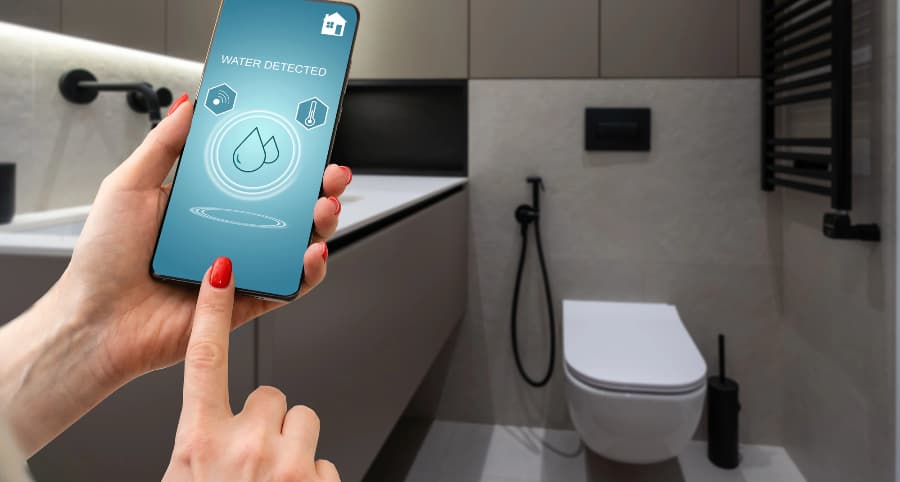How does a water sensor work and why install one with your Scranton smart home?

One minor leak in your home can cause major problems and thousands of dollars in damage. You have to protect against this threat; luckily, there’s an easy way to do so. A water sensor is a simple, effective, and affordable solution. Explore how they work and why you might integrate water sensors into your Scranton smart home.
How water sensors safeguard Scranton properties
Water infiltrates homes in numerous ways, whether from an appliance breakdown, plumbing problem, storm-related incident, or just human error. No matter how it happens, you must know at once, and this is where water sensors come in. But how exactly do they work?
Many water sensors are conductive and function with a pair of electrodes. When water infiltrates the area between the electrodes, an electrical circuit is created, activating your alarm. You’ll also come across capacitive sensors that release an electrical field. When water touches the conductive areas of these sensors, the field is disrupted, and your alarm activates. Optical sensors using infrared LED light are another choice.
Get more from your water sensor
Some advanced water sensors give you even more protection as they feature built-in temperature sensors. This is an excellent benefit in preventing frozen pipes. If there’s an extreme decrease in temperature, you’ll be notified at once. Taking steps before pipes break will protect you from water damage and costly repairs.
Why integrate water sensors into your Scranton smart home?
When water issues arise, you have to be alerted immediately. You can achieve this objective by connecting water sensors to your smart home. Whether you’re home to hear the alarm or away, you’ll be sent an immediate update on your mobile device. In addition, your 24-hour monitoring specialists will be informed. Each second counts in a water emergency to control the destruction and disturbance to your life.
Where should you install water sensors?
Any area at risk of flooding is a suitable place for water sensors. Consider installing in these spots:
- Bathrooms: Place close to tubs or behind toilets.
- Basements: Water commonly infiltrates lower floors via damaged walls or as a result of heavy rain or broken sump pumps.
- Next to water heaters or appliances: Any water-using appliance may leak over time.
- Underneath sinks: Water sensors are great for discovering plumbing leaks in areas not easy to see.
- Attics: Identify roof leaks promptly and avert expensive repairs.
Request water sensors with your Vivint smart home
Give your property the complete protection it requires with Vivint’s innovative devices. Our water sensors in Scranton link to your Vivint mobile app to deliver automatic updates when your alarm activates. You also enjoy incorporated temperature sensors to avert frozen pipes. Discover all the smart home components available in Scranton by reaching out to (570) 775-5689 today.
